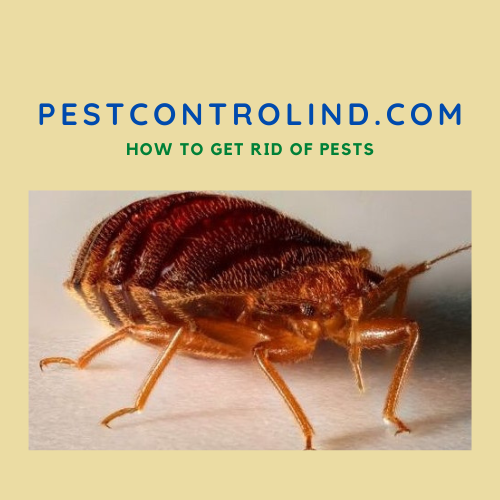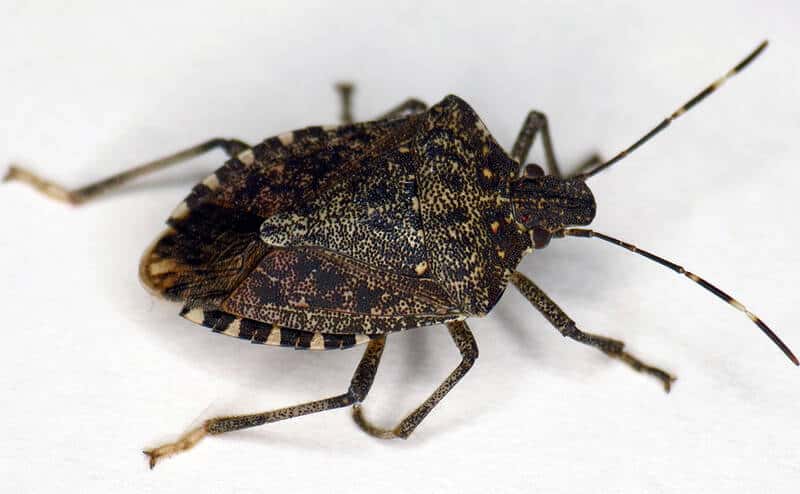Stink bugs, scientifically known as Halyomorpha halys, are known for their distinctive odor and their ability to infest homes and gardens. As these pests continue to spread, gardeners are looking for ways to control their population. A frequently asked question is whether stink bugs can survive in water. This summary delves into the topic, examining the stink bugs’ resilience in water, their natural habitats, and possible control measures that involve water exposure.
I. Can stink bugs survive in water?
Stink bugs are terrestrial insects usually found in gardens, fields, and wooded areas, where they feed on plants and fruits.
Their natural habitat is usually trees and shrubs, where they lay their eggs on the underside of leaves.
Although bedbugs are not aquatic creatures, they have some ability to survive in water for a very limited period.
Stink bugs, like other insects, have a waxy exoskeleton that provides a degree of water resistance. This allows them to float on the water’s surface for short periods, during which they can still access the air necessary for respiration.
However, their survival in water is limited. Prolonged exposure to water can prove fatal for stink bugs, as it can lead to exhaustion, suffocation, or drowning.
This is especially true for young stink bugs, which are more susceptible to water stress than adults of their species.
II. How long can stink bugs stay underwater?
I couldn’t find a reliable source to answer the question of exactly how long a bed bug can live underwater.
Indeed, bedbugs do not breathe in the same way as humans.
Their respiratory system consists of a network of tubes called tracheas. Openings, called spiracles, allow oxygen to flow throughout the insect’s body through its so-called tracheae.
To be able to breathe in oxygen, bedbugs open the spirals by flexing their muscles and adjusting the rate at which oxygen flows through their bodies which need it to function normally.
And to come back to our question, the bug can, especially when it is an adult, can live from a few seconds to a few minutes, using the oxygen already taken before they drown in clear water.
But as far as soapy water is concerned, the stink bug cannot exceed forty seconds, or even 60 seconds at most, underwater. The tracheas will quickly fill up and clog with the inability to breathe fully.
By the way, the soap in the windpipes will make them react and struggle to save themselves. And this energy consumed in seconds will normally deplete their oxygen supply, resulting in rapid suffocation and certain death.
III. Do stink bugs drown easily?
No, it is not easy to drown a stink bug in clear water and especially if it has a branch or a floating object to which it can cling and then fly away.
His body allows him to spend a lot of time on the water trying to swim with his many feet while breathing air.
But in the case of soapy water, the stink bug has difficulty staying on the surface of the water and its tracheas quickly fill with this soapy water, which will prevents it from breathing well.
VI. Are stink bugs attracted to water?
Contrary to what some might think, bedbugs are not inherently attracted to water.
Although these insects, like all living organisms, need water to survive, they do not drink directly. Indeed, they acquire it mainly through their consumption of plant sap, fresh fruits, and vegetables, which are all full of water.
Be aware that water does not act as a direct attractant for stink bugs, but the presence of their preferred food sources in moist environments can make them appear to be attracted to water.
Stink bugs are known to be attracted to light, which is why they often congregate near light sources at night. As a result, they may sometimes appear to be attracted to water when in reality they are reacting to light reflecting off the surface of the water.
Additionally, stink bugs often seek out indoor environments during colder months, seeking warmth and shelter.
And while they can be found accidentally near water sources like leaky pipes or faucets inside homes, it’s not a direct result of an attraction to water.
VI. What happens when a stink bug falls into the water?
When a stink bug falls into the water, it does not immediately drown due to its unique physical attributes. Stink bugs possess a waxy, water-repellent outer layer called the cuticle.
This cuticle allows them to float on water for a long time, preventing them from drowning quickly. but, despite this period of resistance to immediate drowning, it should be noted that they are not natural swimmers and may have difficulty escaping from the water if they cannot find a rod to hold on to or an edge rather not too slippery to be able to go up.
The cuticle also serves another critical function for stink bugs in water—it helps trap a thin layer of air around their bodies.
This air layer allows stinking bugs to continue breathing while floating on the water’s surface, further prolonging their survival. However, this does not mean that stink bugs are immune to drowning.
If they remain submerged in water for an extended period, they may eventually succumb, particularly in soapy water, which reduces the water’s surface tension and can cause stink bugs to sink.
VII. Can stink bugs lay eggs in water?
Stink bugs typically lay their eggs on the undersides of leaves or stems, choosing plants that provide a food source for their offspring.
Eggs, which are barrel-shaped and often clustered together, are laid on surfaces that provide both shelter and food for emerging nymphs.
And given their preference for plant environments, stink bugs are highly unlikely to choose to lay their eggs in water, if ever.
Stink bugs did not evolve to reproduce in aquatic environments because their nymphs require immediate access to food upon hatching, which they would not find in the water.
VIII. Can you flush a stink bug down the toilet?
At first glance, flushing stink bugs down the toilet may seem like a quick and easy way to eliminate these pests from your home.
It’s a non-contact approach that eliminates the need to squish the bugs, thus avoiding the release of their foul odor.
Plus, flushing them down the toilet allows you to quickly remove them from your living space.
But, this method also has several drawbacks. One concern is the potential impact on the environment. Flushing stink bugs down the toilet can result in an increased load on wastewater treatment facilities.
This can contribute to water pollution, especially if a large number of people use this method to deal with stink bug infestations.
Another disadvantage is that stink bugs are, as just discussed, capable of surviving underwater for a limited period of time.
Although they are terrestrial insects and are not well adapted to an aquatic lifestyle, their unique respiratory system may allow some individuals to withstand temporary submersion.
Therefore, flushing them down the toilet may not be a foolproof method of eliminating these pests.
IX. Can stink bugs swim or float?
Stink bugs, being terrestrial insects, do not possess the ability to swim like aquatic creatures.
However, they can float on water due to their waxy exoskeleton, providing some water resistance.
The waxy coating allows them to remain buoyant on the water’s surface for short periods, where they can still access the air necessary for respiration.
Although they can float, their survival in water is limited, and prolonged floating in water will automatically lead to significant depletion of their energy, which will induce suffocation and subsequent drowning.
X. How to get rid of stink bugs in your garden?
Some effective strategies include:
- Mechanical removal: Using tools like vacuum cleaners or hand-held bug vacuums allows you to physically remove stink bugs without crushing them. Once collected, they can be disposed of outside, far away from your home.
- Traps: Commercially available stink bug traps, as well as homemade solutions, can help reduce stink bug populations. These traps often use pheromones or light to attract the insects and capture them in a container or on a sticky surface.
- Sealing entry points: Preventing stink bugs from entering your home is a critical step in managing infestations. Seal any gaps, cracks, or openings in your home’s exterior, and ensure that windows and doors are properly fitted with screens.
- Natural Repellents: Essential oils like peppermint, lavender, and eucalyptus can be used as natural repellents to keep stink bugs out of your garden. Mixing a few drops of these oils with water in a spray bottle and applying the solution to potential entry points can help deter stink bugs from entering your home.
These strategies will not only help you deal with stink bugs more efficiently but also contribute to a more sustainable approach to pest control.
Useful Links:
How to Know If You Have Dust Mites in Your Bed?
https://cisr.ucr.edu/invasive-species/brown-marmorated-stink-bug

